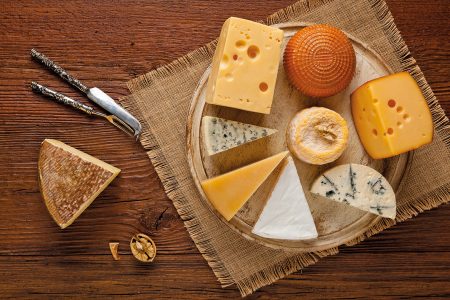The most authentic sounds and tastes of Switzerland originated on the slopes of the highest European mountain range, and are intertwined with the tradition that is preserved to this day.
The Alps have greatly influenced the Swiss tradition. Pastures at high altitudes have spurred the development of livestock and the production of top-notch cheese. Although this connection is not noticeable at first, but apart from the specific taste, this also spurred the development of authentic sound. First, it gave birth to an instrument with which cattle breeders used to call in their cows, while today, the alphorn is one of the staples of this region.

So typically Swiss, the alphorn, was originally a musical and signalling instrument used by the herdsmen and the many yodelling choirs that have been formed since the 19th century. In general, Switzerland has a diverse amateur music scene, and there is at least a choir or a brass band in virtually every village.
Like the didgeridoo, the Indian bamboo or wooden trumpet and the African horn, the alphorn is one of the original wooden wind instruments. The alphorn in Switzerland was first documented in the mid-16th century by natural scientist Conrad Gesner. Over time, the alphorn almost totally disappeared as an instrument used by Swiss shepherds. It was only with the emergence of 19th-century romanticism and the revival of folklore and tourism that the alphorn experienced a renaissance and even became a national symbol.
It was used to call the cows from the pastures and into the barn at milking time. An engraving from 1754 shows a shepherd using the alphorn to motivate the cows to cover the last steep stretch on their big climb up into the Alps. A glass painting from the Emmental Valley dating back to 1595 shows the alphorn being blown, probably to pacify the cows during milking. The blowing of the alphorn in the evening is also a traditional theme in art.
The alphorn has long been a tool used by shepherds. It was used to call the cows from the pastures and into the barn at milking time
This sound served as evening prayer and was mainly practised in the Reformed cantons, while in the German-speaking Catholic cantons in Central Switzerland, the call to prayer was preferred. The main function of the alphorn was, however, for communication with the herdsmen on the neighbouring Alps and with the people down in the valley below.
After 1800, as the production of cheese increasingly shifted from the Alps to the dairies in villages, the alphorn was used less and less. After the alphorn was hardly heard at traditional festivals anymore, the Bernese official, Niklaus von Mülinen, began to repair alphorns in the 1820s and distribute them to talented players in Grindelwald. Although the alphorn had more or less lost its original function in the mountains, today, it wins the hearts of its audiences as a musical instrument, has become a tourist attraction and a symbol of Switzerland.
Alp cheese is only produced in the summer from cow, goat or sheep milk, that graze on the Alpine pastures. It is only when the milk production and cheese-making are done on the mountains themselves that the cheese may be called Alp cheese.
Since the 15th century, people living north of the Alps have been using rennet – a substance from the stomach of a cow – to make hard cheeses. This hard cheese was greatly appreciated because it was much more durable than the cottage cheese that people had been making before. It allowed them to create a milk supply for the winter. This is also when the foundation of the Swiss cheese culture was laid.
The term Alp cheese is protected and may only be used for cheeses that are made in summer on the Alpine farms.
Until the 18th century, hard cheese was made only in the summer in the Alps. The milk yields of those times meant that the cows were dry for a long time in the winter and the rest of the milk produced was used by households. This changed in the early 19th century when the practice of intensive agriculture enabled cheese to be produced in the valleys and during the winter – i.e. at times when the cows were being fed hay. The cheese made year-round in the valleys in the mountainous regions is now known as mountain cheese – to distinguish it from Alp cheese.
The term ‘Alp cheese’ is protected and may only be used for cheeses that are made in summer on the Alpine farms. The cows graze freely on the mountains and seek out their own food on the rich, lush Alpine pastures. Their summer home in the mountains provides them with hundreds of different herbs, as opposed to only a few dozen types that grow in valleys. This healthy food diversity, the great freedom of movement and the crystal clear mountain water create tasty raw milk that can be gently made into cheese while still at body temperature.